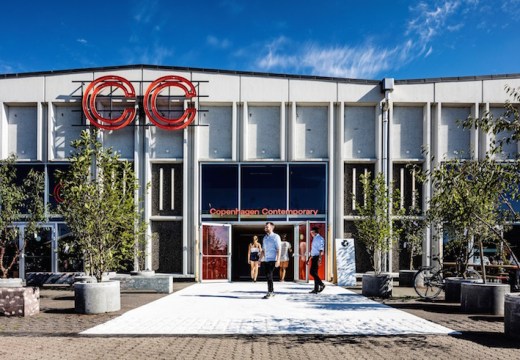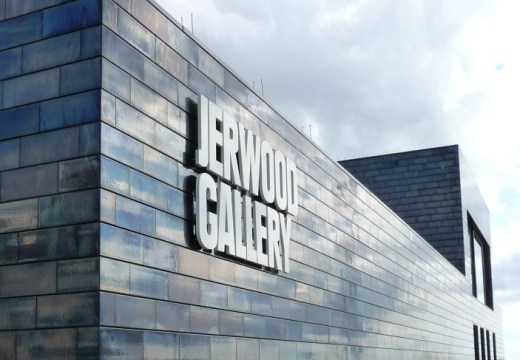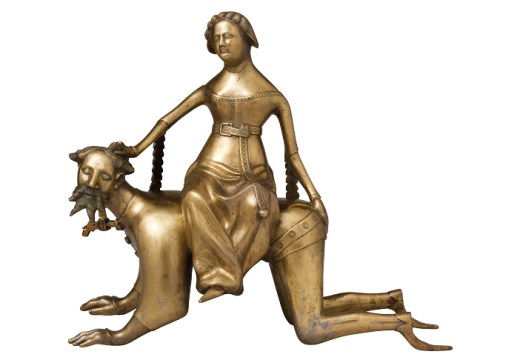As the Danish artist Tal R heads to the British coast for the summer, with an exhibition at Hastings Contemporary, he talks to Apollo about the impulse that drives his paintings – and how he has always been drawn to the sea
With the more recent works in this show, you’ve turned to a domestic setting, and to nudes and still lifes. How did this subject emerge after the Sexshop paintings of 2017?
When you work as an artist, there are certain things that seem impossible and that you always work around – and over the years you get closer and closer to those things that you call impossible. For me, that was painting people, with or without clothes. A lot of post-war artists either moved sideways into figuration or they had to avoid it, and when figuration appeared again at the end of the ’90s it had to be in a kind of distant, ironic way. About 10 years ago I started to take direct steps towards figuration. I began drawing people from life when I was teaching in Düsseldorf, renting a model in the classical way, but that didn’t work at all – it’s just an exercise. I realised that I had to have a personal motivation, I had to ask people to sit for me, which I began to do when I was travelling, mostly in hotel rooms. I discovered that this kind of ambivalence, this kind of intimidating situation where you sit with someone who is almost a stranger and they might undress, was quite productive for the drawings and paintings. Eventually I took the same idea into my own apartment.
And the still lifes?
I began to look at the objects that I have in my house, putting them into pairs or groups of three or five. Finding the places to put them, and then painting them. The objects that I have are not especially precious, but the reasons why you pick up stuff aren’t known to you at first – you don’t go through flea markets looking for exactly that little crocodile or evil-looking doll, you just pick them up. I could be specific about all the objects in the paintings because all of them have a story. The monkey in Yellow Monkey, for example, is an inflatable that my daughter gave me, and after a few days it started losing air and collapsing. I thought, I can blow air into it again or just do a painting of it.
Do you think of painting as a way of giving order to the domestic environment, then?
Did you say ‘forgiving’? That would be a nice word for it – I don’t know why, but it would be great to say that the paintings are a way to forgive the objects. Maybe it’s a way to forgive my greedy hands for collecting all these objects. I love them but I also don’t care about them: I never study them or try to find out where they’re from. When you put them in a painting you put them on a stage, as if they’ve been waiting for that moment. Every painting is a certain kind of debate or conversation: when you pick up an object, or you ask somebody if you can paint them, there’s a type of obsession there. The debate takes place through painting, leaning the painting towards what made you approach the object or figure in the first place. You are painting towards a kind of impulse. I think as an artist the biggest challenge is to paint towards banality.
Can you explain what has dictated the selection of works for the exhibition at Hastings Contemporary [formerly the Jerwood Gallery]?
It’s really not in my hands. It’s up to the curator. I showed them everything that I had, everything that I knew that was in reach, and they looked through books and made the selection. More and more I think it’s a better option that I don’t pick stuff for my own shows when they are in an institution. I’ve done my job. I’ve made the paintings. When somebody else makes a red thread through my work, their vision is better than mine. When I first saw images of Hastings Contemporary, with the fishing fleet and net huts, the first thing I thought was that the ideal museum would actually be a ship – and the show is going to be titled ‘eventually all museums will be ships’. When we looked into my stores, I found that I have lots of paintings that fantasise about the sea and ships, which are going into the show. It’s a metaphor, though, about getting lost and found – I don’t actually like to be out at sea.
An exhibition such as this one, with works drawn from different periods, puts your stylistic variety centre stage. How important is it to display the transformations that have punctuated your career?
There are so many possible approaches. Doing it like this can make sense, though, as it helps to see how I have walked into a city, taken one road and then decided on another – that’s my maze-like way of working. It’s interesting, when you see a show like this one, that it may look like I’m changing all the time, but you’ll also recognise that there’s the same – now I’m going to say something terribly romantic – the same beating heart in all of these works. When I try to look at my works from the outside I don’t think they are as different as they pretend to be. They are pretenders.
An exhibition of works by Roy Oxlade [‘Shine Out Fair Sun’] will be mounted alongside your show. How will the paintings play off against each other?
I met Roy before he died, with [his wife] Rose Wylie. I adore his works, and I’m really happy that we’re going to show them side by side. Exhibitions of paintings are quite rare at the moment because a lot of institutions want works that seem more interactive, or – you could say – that interact in a different way with society. I’m really honoured to be showing alongside works by Roy Oxlade.
More widely, has modern British art been a significant influence on your work? Works by David Bomberg are also going on display at Hastings Contemporary this summer…
I love Lowry, and Alfred Wallis. As a boy I admired Wallis’s work, and I’ve also made drawings of his ships. I learned a lot from his ships because, in an odd way, they are so different to actual ships. They are dream ships. They might just as well travel into the brain as into the ocean.
‘Tal R: eventually all museums will be ships’ is at Hastings Contemporary from 6 July–13 October.
From the July/August 2019 issue of Apollo. Preview and subscribe here.
Unlimited access from just $16 every 3 months
Subscribe to get unlimited and exclusive access to the top art stories, interviews and exhibition reviews.

















![Masterpiece [Re]discovery 2022. Photo: Ben Fisher Photography, courtesy of Masterpiece London](http://www.apollo-magazine.com/wp-content/uploads/2022/07/MPL2022_4263.jpg)
Is the Stirling Prize suffering from a case of tunnel vision?